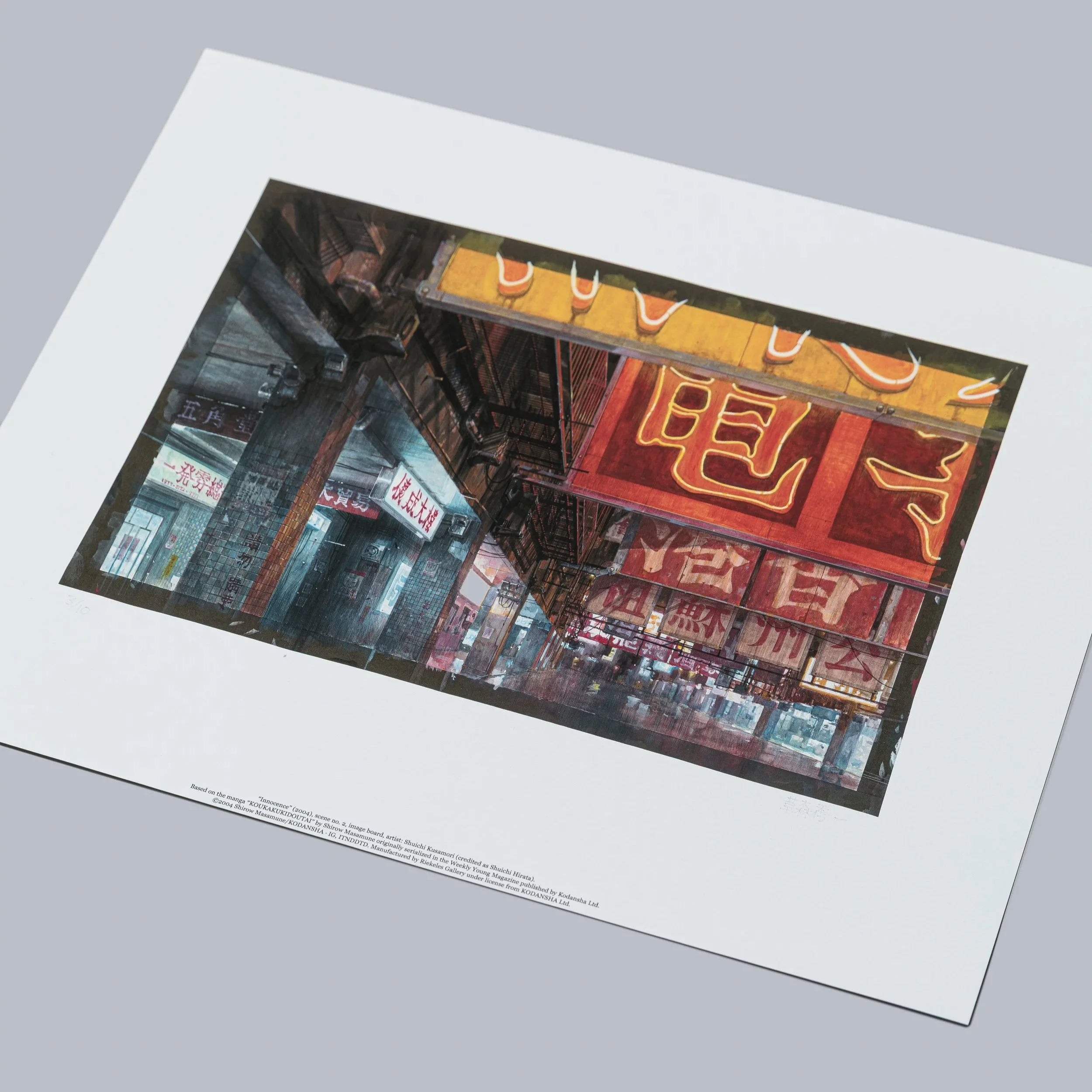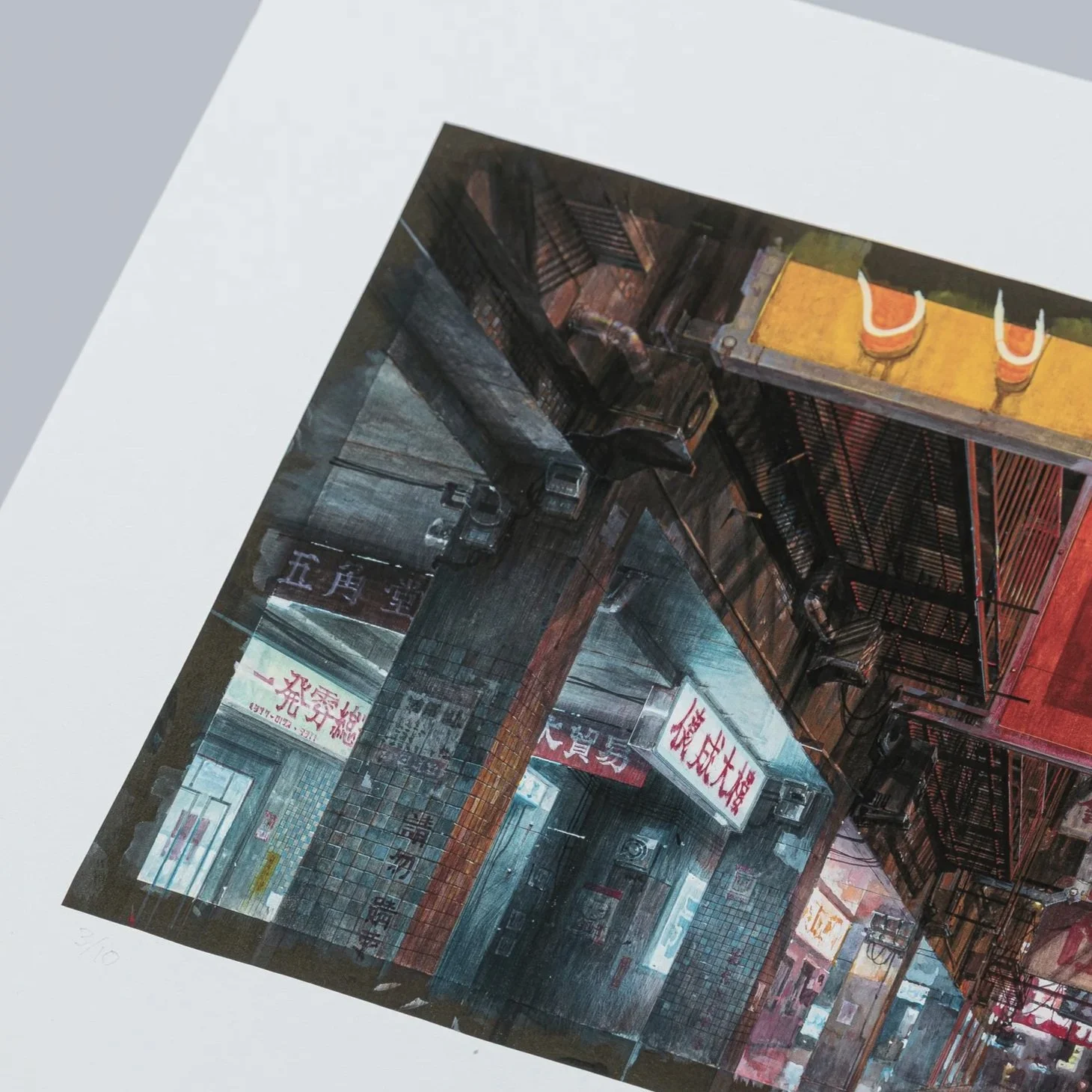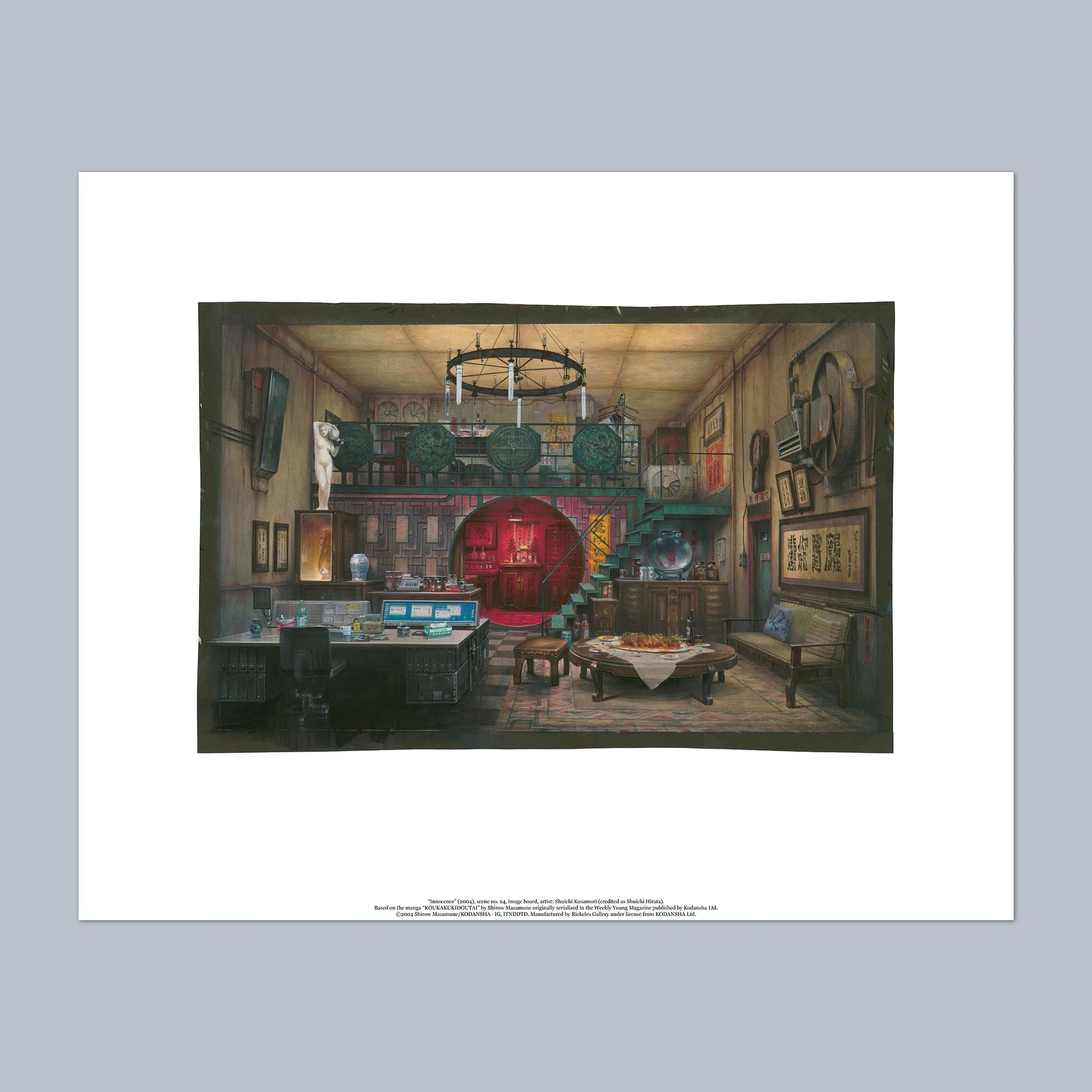 Image 1 of 4
Image 1 of 4

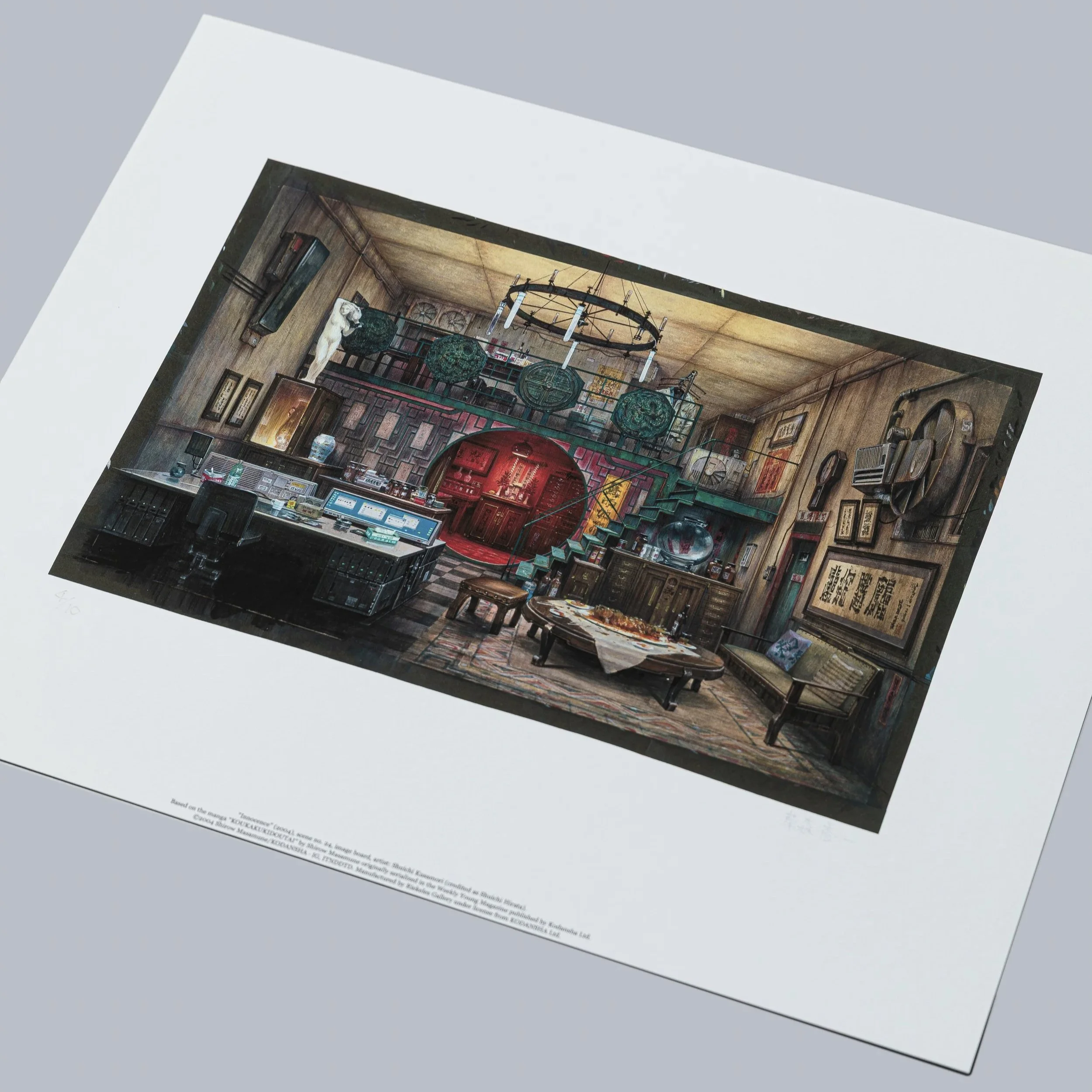 Image 2 of 4
Image 2 of 4

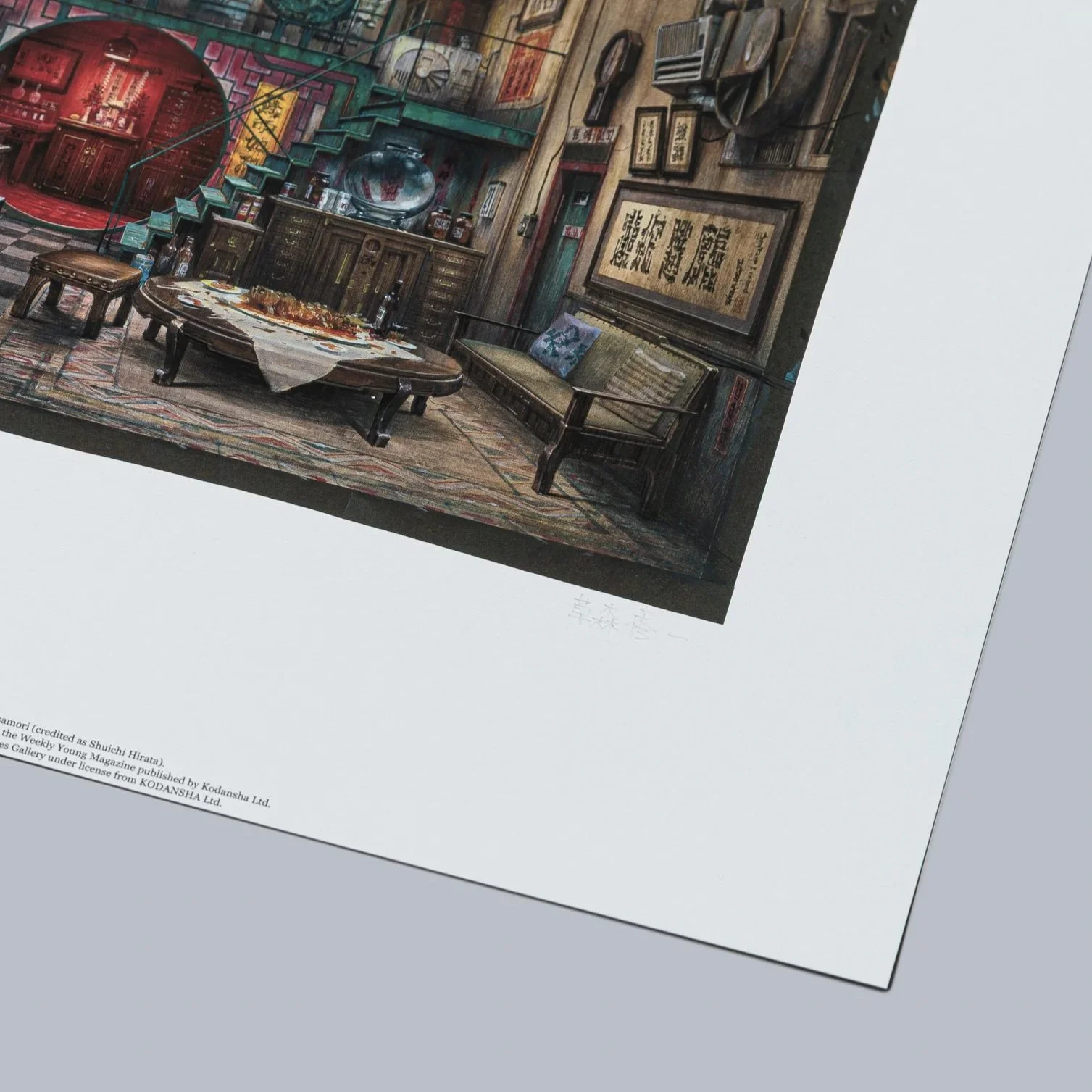 Image 3 of 4
Image 3 of 4

 Image 4 of 4
Image 4 of 4





Innocence, Scene No. 24, Solegraph
Shūichi Kusamori
Innocence, Scene No. 24
2004
Solegraph (high-grade fine-art print)
Edition of 10 + 3 AP (artist proofs)
Numbered and signed by the artist
Format: 400 × 500 mm
Artwork Size: 241 × 372 mm
For Shūichi Kusamori, Innocence (2004)—the second installment of Ghost in the Shell (1995)—marked his first direct collaboration with director Mamoru Oshii. Previously, he had worked under the artistic direction of Hiromasa Ogura on the Patlabor films as well as on Ghost in the Shell (1995).
Innocence is a hybrid production that combines digital and traditional techniques. The originals of the backgrounds shown here were painted with Nicker Poster Colour—the standard medium of Japanese anime background painting. During the production of Metropolis (2001), Kusamori developed the technical and craft skills in the digital realm that enabled him to take on the role of art director on Innocence.
For Mamoru Oshii, the artwork for this project was unique and “perhaps the true star of the film.” In his view, the cityscapes “should not simply fill the space behind the characters.” He explains that “the silent world behind the characters is where the director conveys his central vision. The backgrounds are the director’s vision of reality. There must be something behind the characters that carries a message.”
In contrast to Ogura’s restrained, “cool” style evident in Ghost in the Shell (1995), Kusamori describes himself as an illustrator who paints “too much”—covering his compositions with an abundance of detail that borders on the baroque. This maximalist approach made him the ideal fit for Oshii’s visually dense, ornamented “Chinese Gothic” world in Innocence.
The film’s effort and cost are clearly visible—Innocence significantly contributed to cementing anime’s international reputation for outstanding image quality. In 2005, Innocence became the first anime feature to be nominated for the Palme d’Or at the Cannes Film Festival.
Further information on these works can be found in Stefan Riekeles’ book Anime Architecture.
Shūichi Kusamori is credited in the end credits of Innocence as Shūichi Hirata, as he married after this production and took his wife’s family name.
Shūichi Kusamori
Innocence, Scene No. 24
2004
Solegraph (high-grade fine-art print)
Edition of 10 + 3 AP (artist proofs)
Numbered and signed by the artist
Format: 400 × 500 mm
Artwork Size: 241 × 372 mm
For Shūichi Kusamori, Innocence (2004)—the second installment of Ghost in the Shell (1995)—marked his first direct collaboration with director Mamoru Oshii. Previously, he had worked under the artistic direction of Hiromasa Ogura on the Patlabor films as well as on Ghost in the Shell (1995).
Innocence is a hybrid production that combines digital and traditional techniques. The originals of the backgrounds shown here were painted with Nicker Poster Colour—the standard medium of Japanese anime background painting. During the production of Metropolis (2001), Kusamori developed the technical and craft skills in the digital realm that enabled him to take on the role of art director on Innocence.
For Mamoru Oshii, the artwork for this project was unique and “perhaps the true star of the film.” In his view, the cityscapes “should not simply fill the space behind the characters.” He explains that “the silent world behind the characters is where the director conveys his central vision. The backgrounds are the director’s vision of reality. There must be something behind the characters that carries a message.”
In contrast to Ogura’s restrained, “cool” style evident in Ghost in the Shell (1995), Kusamori describes himself as an illustrator who paints “too much”—covering his compositions with an abundance of detail that borders on the baroque. This maximalist approach made him the ideal fit for Oshii’s visually dense, ornamented “Chinese Gothic” world in Innocence.
The film’s effort and cost are clearly visible—Innocence significantly contributed to cementing anime’s international reputation for outstanding image quality. In 2005, Innocence became the first anime feature to be nominated for the Palme d’Or at the Cannes Film Festival.
Further information on these works can be found in Stefan Riekeles’ book Anime Architecture.
Shūichi Kusamori is credited in the end credits of Innocence as Shūichi Hirata, as he married after this production and took his wife’s family name.



